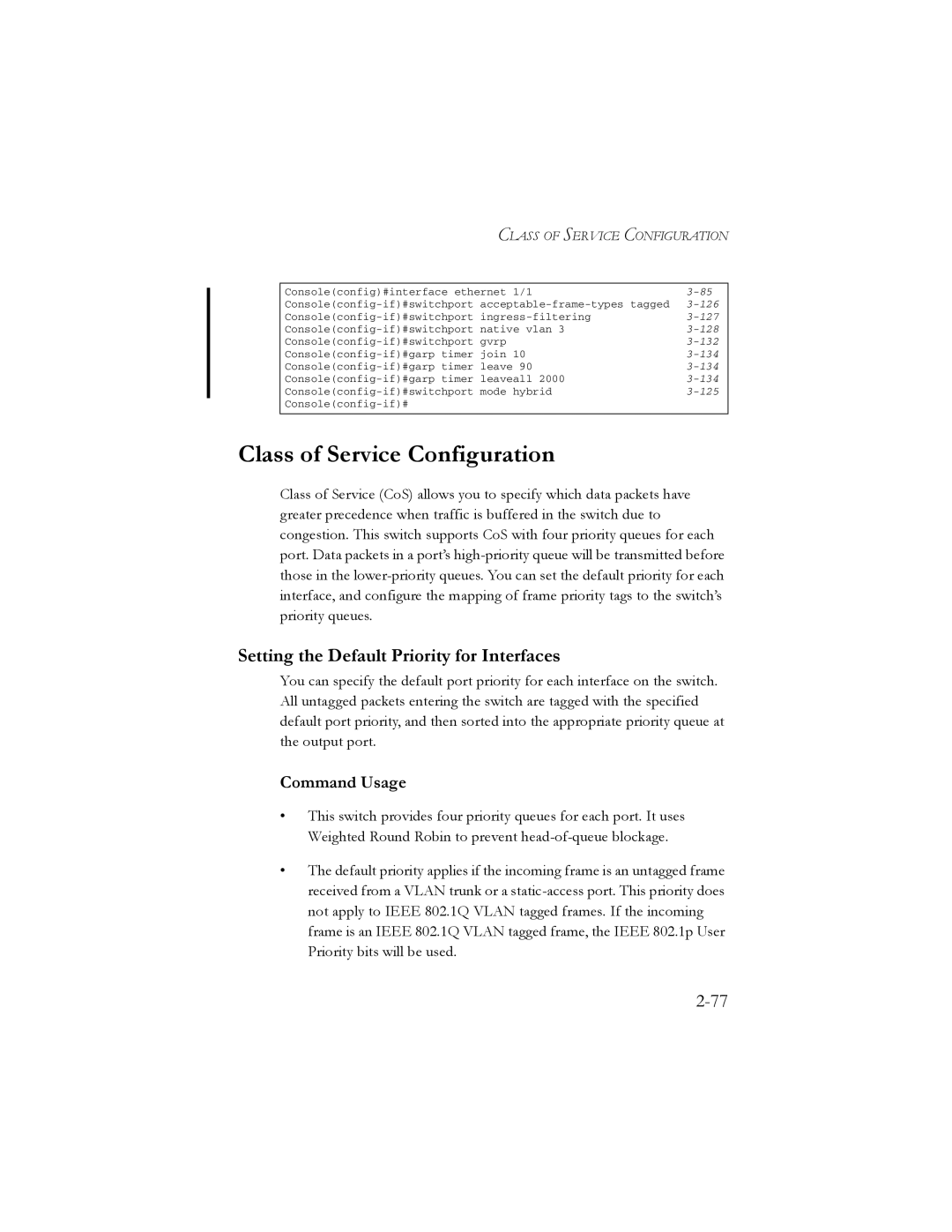CLASS OF SERVICE CONFIGURATION
Console(config)#interface ethernet | 1/1 | |
| ||
10 | ||
hybrid | ||
|
| |
|
|
|
Class of Service Configuration
Class of Service (CoS) allows you to specify which data packets have greater precedence when traffic is buffered in the switch due to congestion. This switch supports CoS with four priority queues for each port. Data packets in a port’s
Setting the Default Priority for Interfaces
You can specify the default port priority for each interface on the switch. All untagged packets entering the switch are tagged with the specified default port priority, and then sorted into the appropriate priority queue at the output port.
Command Usage
•This switch provides four priority queues for each port. It uses Weighted Round Robin to prevent
•The default priority applies if the incoming frame is an untagged frame received from a VLAN trunk or a
